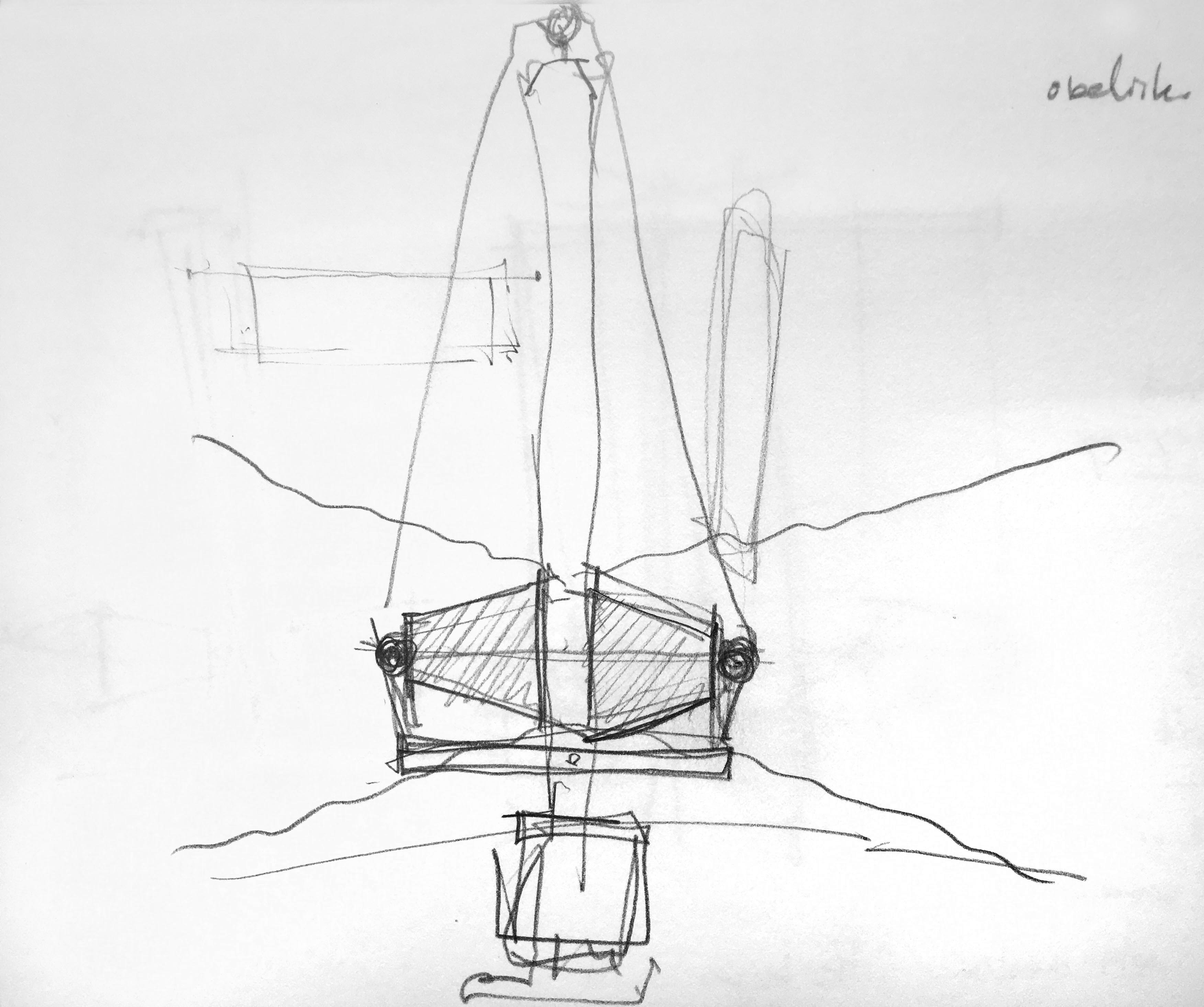
Walking Harps and Atmospheric Listening Stations
Related to the instruments of the Kite Choir, Walking Harps and Atmospheric Listening Stations explore:
- The aeolian harp as an ‘active’ instrument that one can play, by moving and roaming in relation to the wind.
- The aeolian harp as an instrument with which to make the dynamic thickness of the atmosphere palpable.
Walking Harps
Mono Walking Harp at Quarter Turn (2020). Wood frame, piano wire, single-string electromagnetic pickup, miniamp.
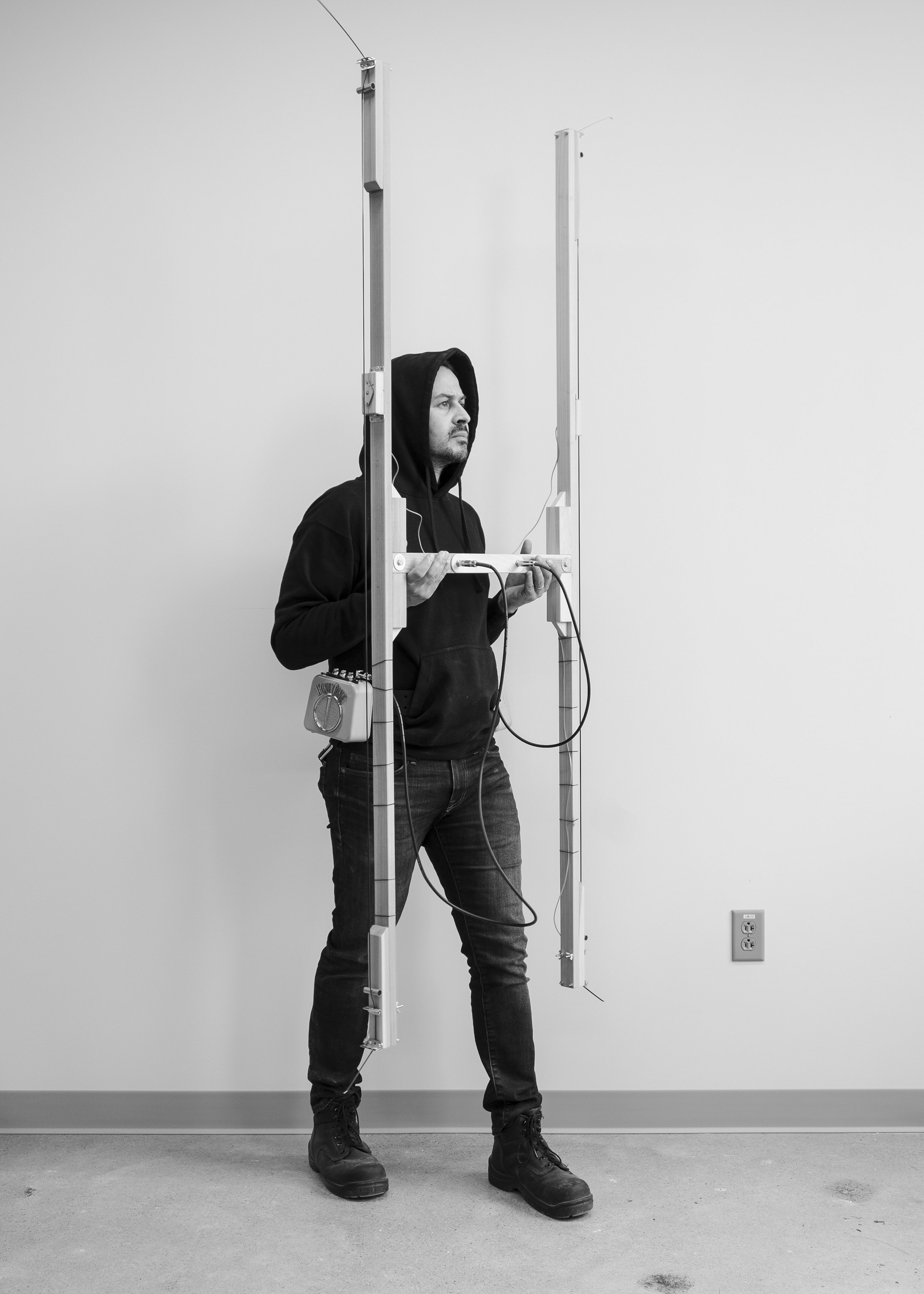
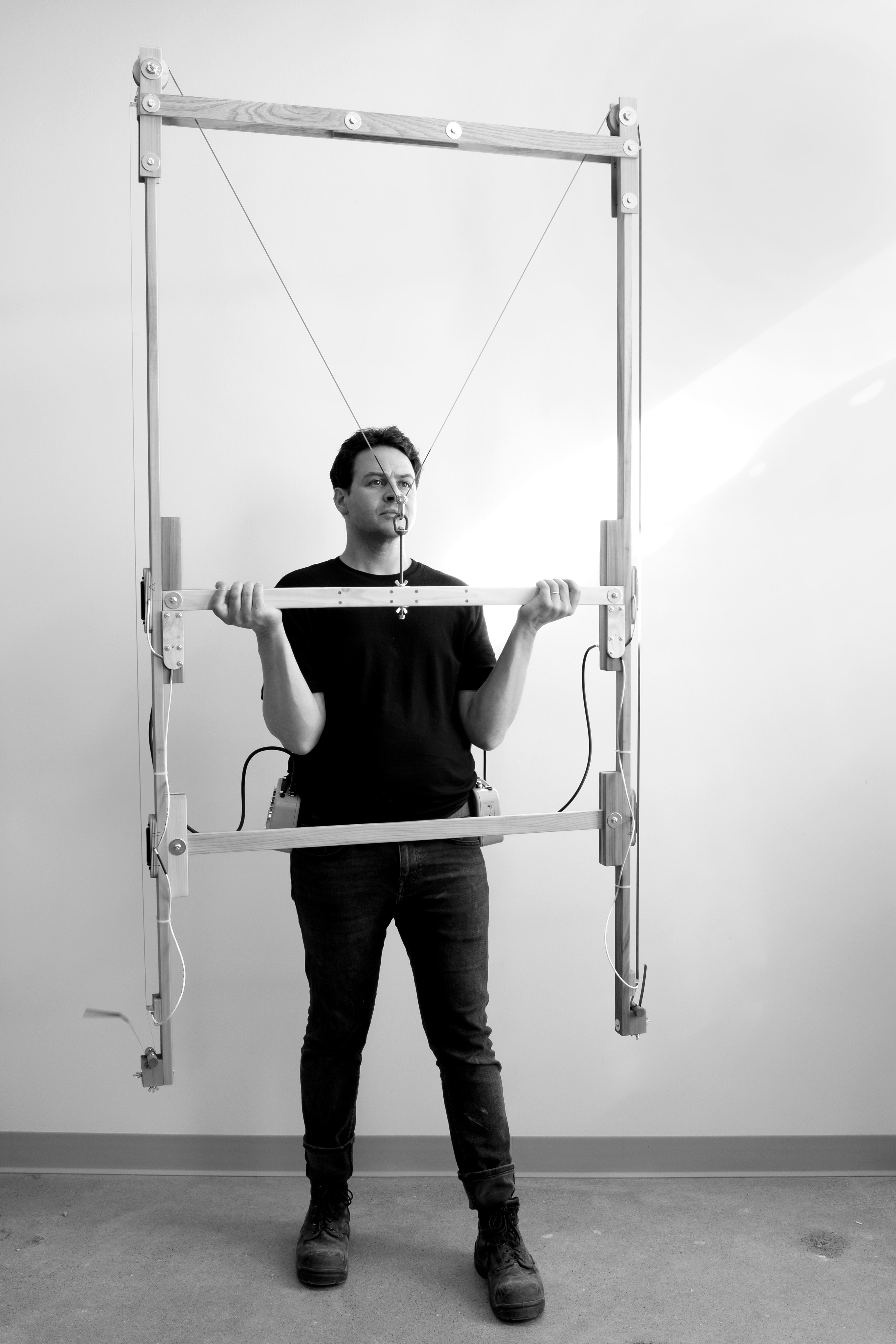
Stereo Walking Harp Sound Test (2021). Wood frame, 1/4” steel ribbons as strings, two single-string electromagnetic pickups to direct boxes and recorder. Sculpture Space, Utica, New York.
See also: LOOM︎ROOM︎HARP
Atmospheric Listening Stations
Tests for the atmospheric listening stations emerged in consideration of the six foot distance between people recommended in the USA during the Covid-19 Pandemic. If a single string vibrates in response to the flow of air in that one spot, what is the difference in how the air flows across six feet?
Fırat Erdim and Olivia Valentine, Socially Distanced Electric Aeolian Harps. May 29, 2020. Des Moines, Iowa.

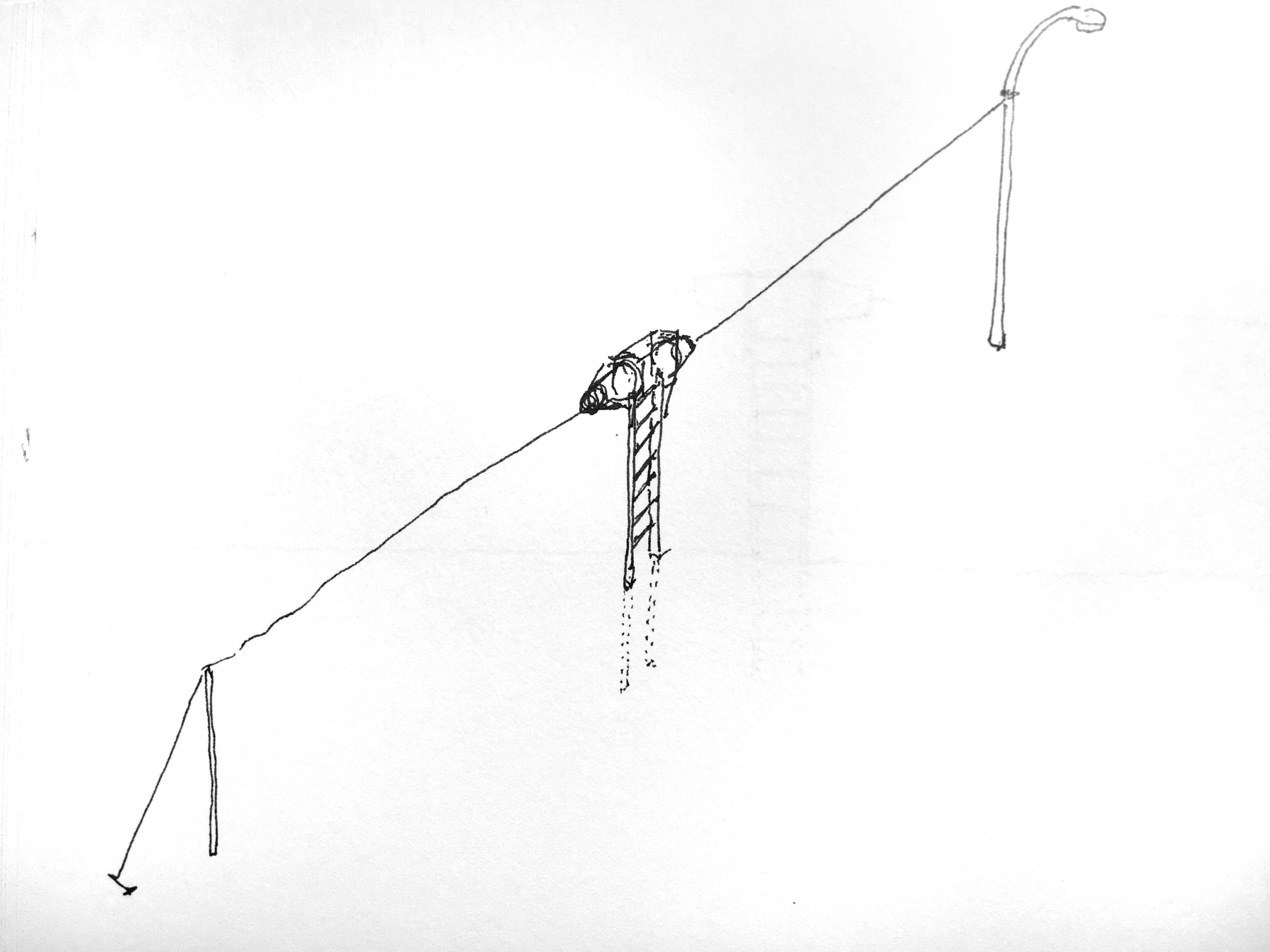

Atmospheric Listening Station Mock-Up (Horizontal Strings). June 18, 2020. Des Moines, Iowa.
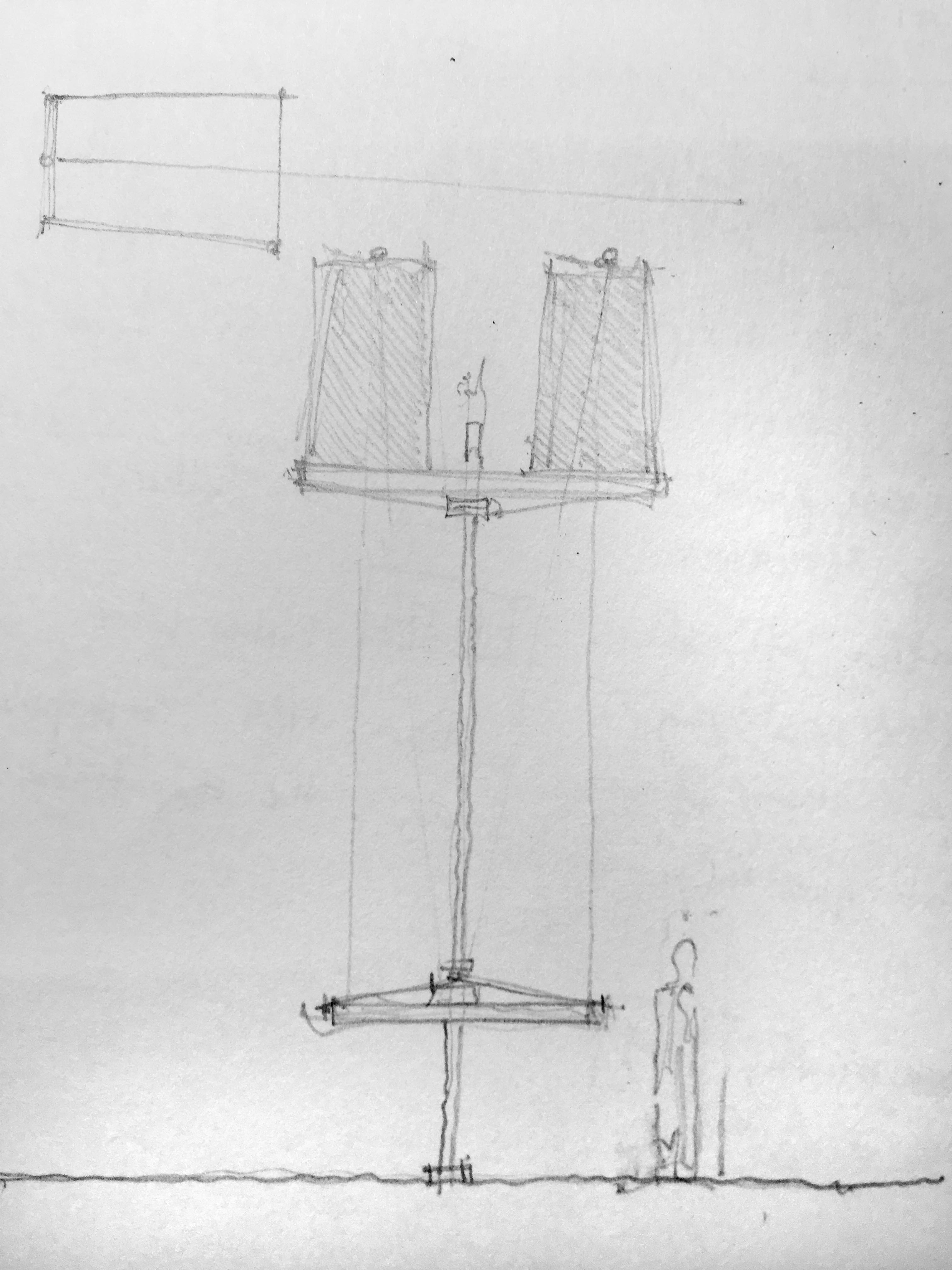

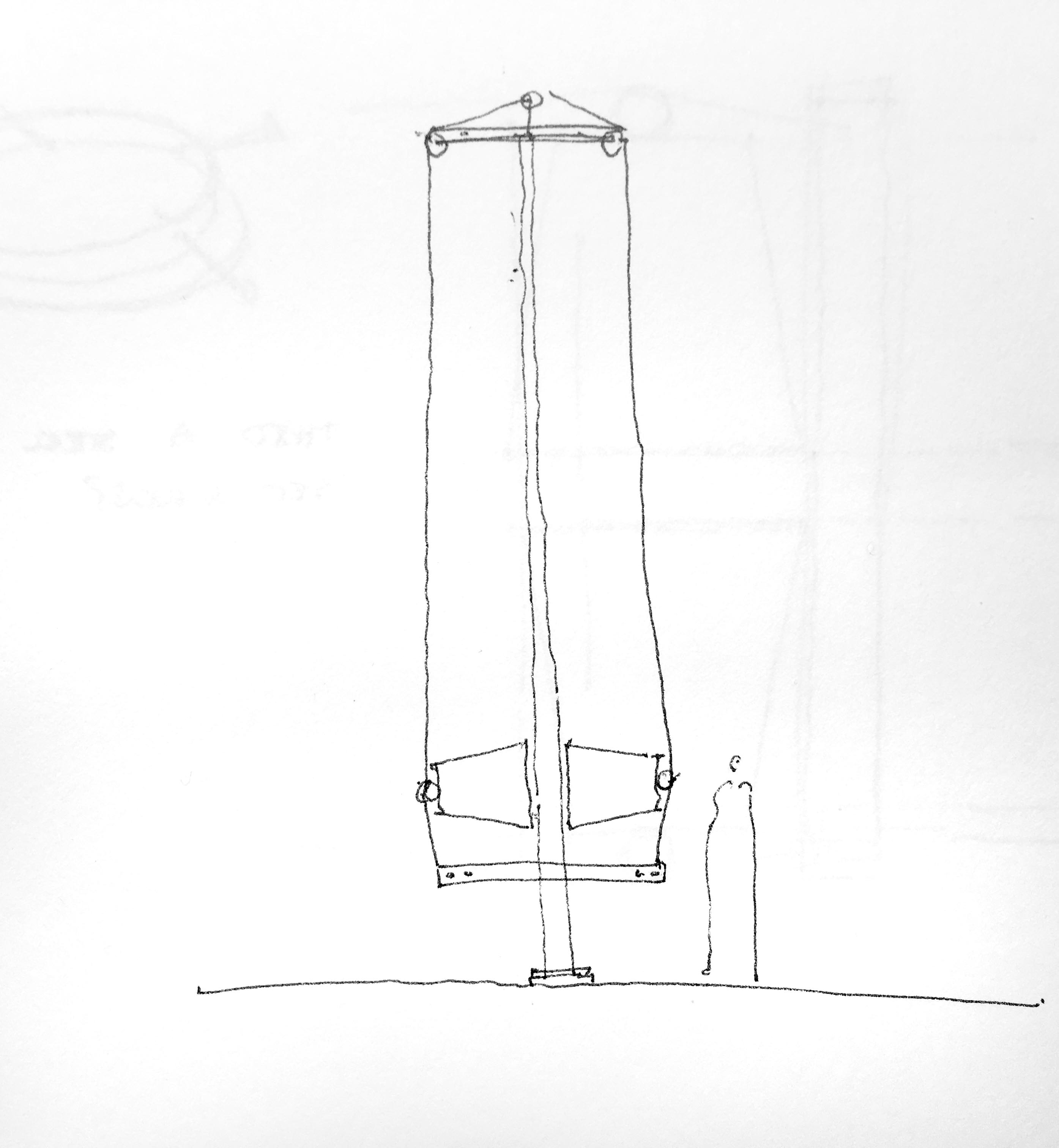
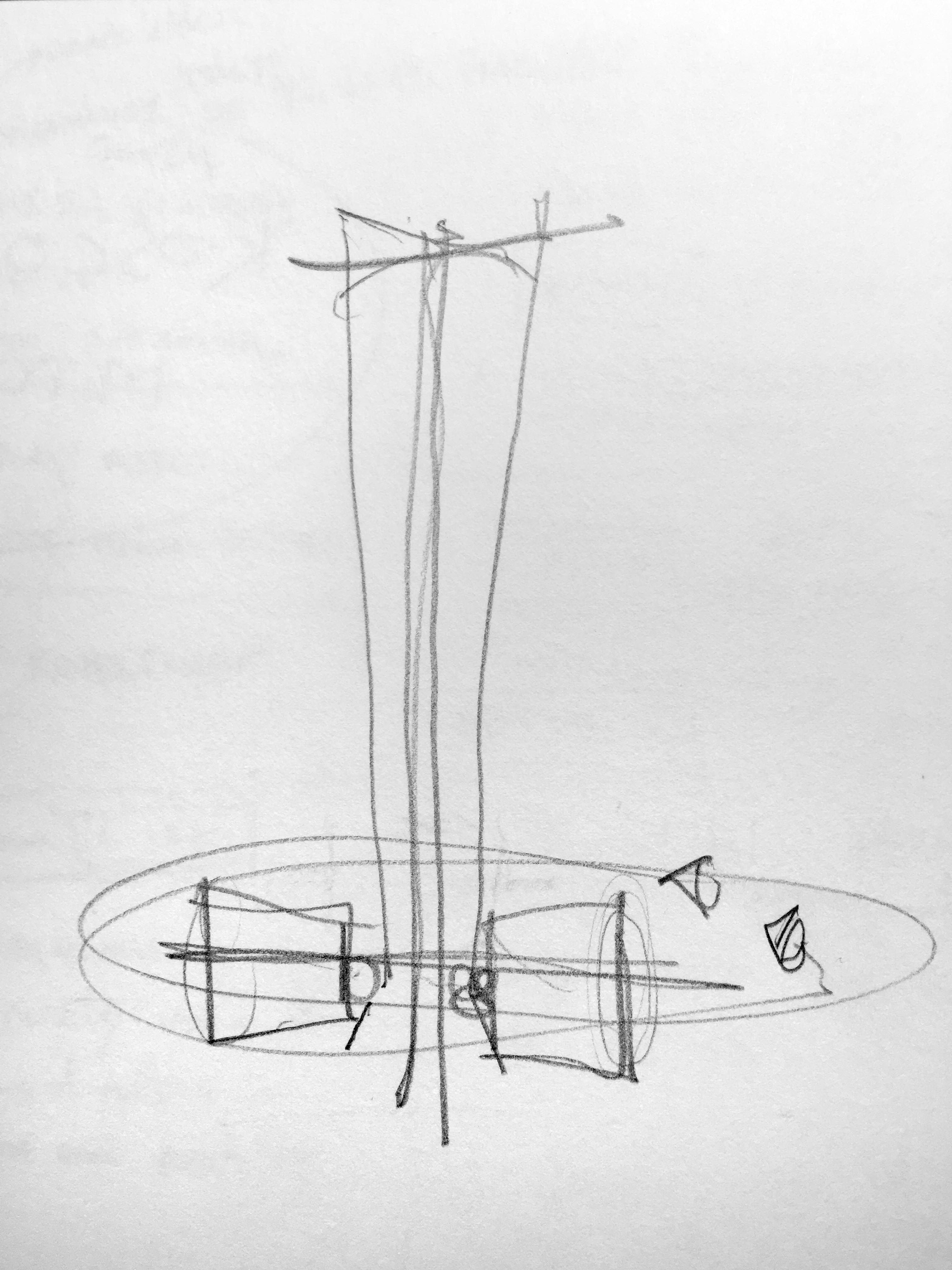
Sketches for Atmospheric Listening Station for flagpole at Stone Quarry Hill Art Park, Cazenovia, NY.

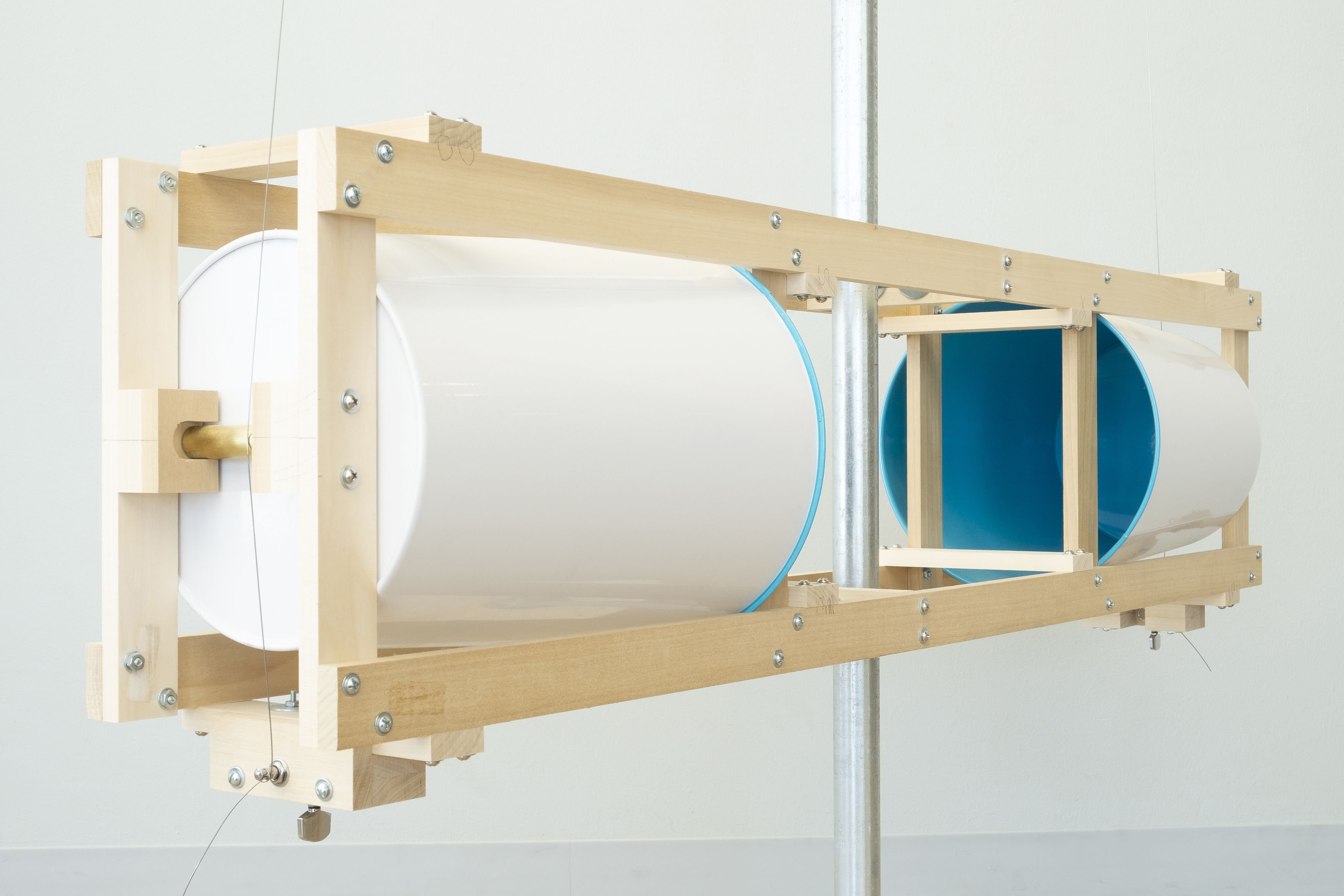
Atmospheric Listening Station Mock-Up (Single String). August, 2020. Des Moines, Iowa.


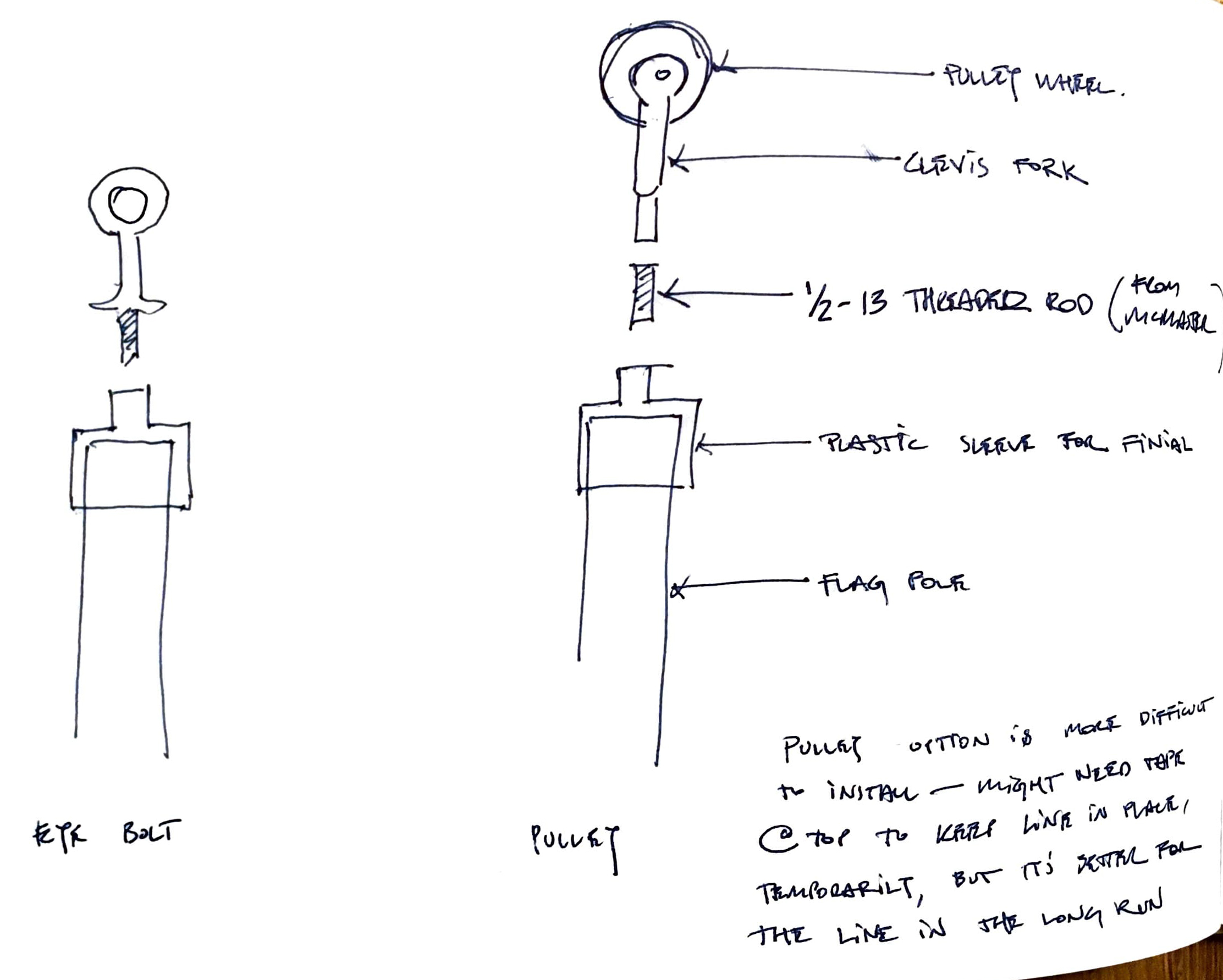


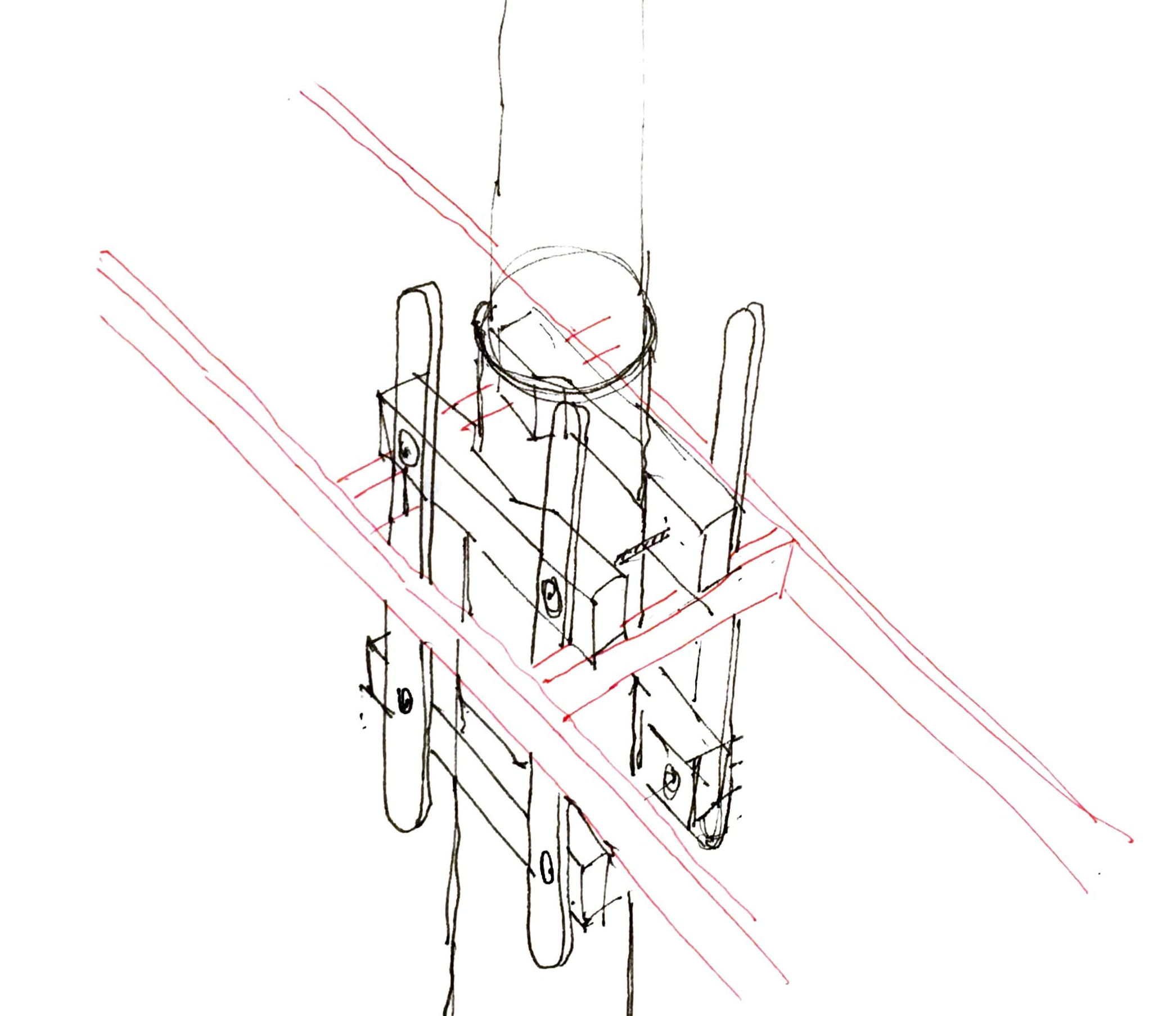
Installation sketches for Atmospheric Listening Statio at Stone Quarry Hil Art Park, Cazenovia, NY.
Atmospheric Listening Station as installed at Stone Quarry Hill Art Park, Cazenovia, NY. October, 2020. The string is continually tensioned by the weight of the frame carrying the found beverage-bin resonators.
Many thanks to the Stone Quarry Hill Sculpture Park, Sculpture Space, the Daniel J. Huberty Faculty Fellowship in Architecture and the Department of Architecture at Iowa State University for their support of these projects.